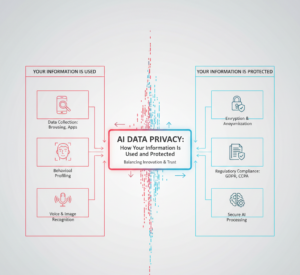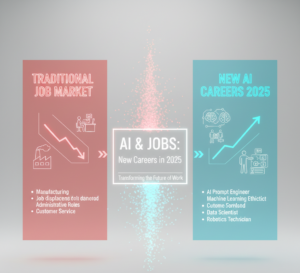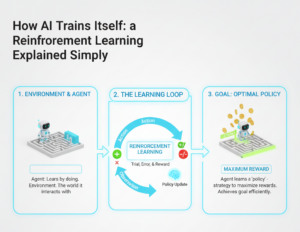Multimodal Artificial Intelligence: Beyond Text and Images

Multimodal Artificial Intelligence: Beyond Text and Images
For many years, artificial intelligence has been divided into various divisions, with different models being developed for each individual job. We had specialized systems for processing text, dedicated systems for evaluating photos, and dedicated systems for comprehending sounds. However, the many data points that exist in the environment we inhabit are not separated from one another. It is a rich tapestry of views, sounds, and words, all of which are connected with one another.
This is where multimodal artificial intelligence (AI) enters the picture. It represents the next major breakthrough in technology, as it advances beyond the siloed approach in order to develop systems that are capable of understanding, reasoning, and generating information across a variety of data kinds at the same time. The first generation of generative artificial intelligence mixed text and visuals, but the next generation is really changing the game.
What exactly is multimodal artificial intelligence?
The capability of a model to absorb and incorporate input from a variety of “modalities” concurrently is the essential component of multimodal artificial intelligence (AI). It may process a variety of inputs, such as a picture, a spoken instruction, and a written document, in order to develop a more thorough grasp of the subject.
This indicates that an artificial intelligence (AI) is currently capable of:
- See and Understand: You may show it a picture of a busy street and ask it, “How many cars are featured in this picture?”
- Listen and Respond: You may use your voice to instruct it to search for a certain video clip from a podcast that is in extended form.
- Read, Watch, and Synthesize: In order to offer a more thorough diagnostic summary, it is capable of reading a medical report, analyzing an X-ray, and listening to a doctor’s notes.
- The real strength resides in the combination of these many sorts of data. The integration of many sources of information enables the artificial intelligence to develop a more comprehensive and human-like understanding of a situation, which results in more accurate and nuanced outputs.
The Next Frontier: Beyond Text and Images
The majority of the attention has been directed on pictures and text, but the true innovation is occurring in the modalities that are just now emerging. Take a look at some of the potential applications that are currently under development:
Audio and Video: Consider an artificial intelligence (AI) that is capable of more than just transcribing a video; it can also assess the speaker’s tone, recognize items that are present in the scene, and comprehend the context of the discussion. This technology is now being used for a number of applications, including the automated production of precise subtitles, the creation of short video snippets from lengthy recordings, and the analysis of human behavior.
Sensor and Environmental Data: Multimodal artificial intelligence (AI) is used in smart cities to include data from social media feeds, traffic cameras, and environmental sensors. This helps to improve traffic flow, control energy usage, and react to crises more efficiently. In order to make split-second judgments that ensure safe navigation, autonomous cars employ a combination of data from cameras and radar.
Multimodal artificial intelligence (AI) that incorporates tactile input will be the driving force behind the next development of robotics and virtual reality. This will allow for the creation of robots and virtual reality experiences that are more immersive and realistic. A robotic arm would be capable of “feeling” the texture of an item that it is manipulating, and a user of virtual reality (VR) would be able to sense the difference between a smooth rock and a rough tree bark, which would result in an experience that is really immersive.
Biometric and Medical Data: Multimodal AI is set to change healthcare. Artificial intelligence (AI) has the ability to analyze medical imagery, genetic information, patient records, and real-time sensor data from wearable devices in order to deliver diagnoses that are more accurate and individualized. Additionally, AI can anticipate the evolution of diseases and suggest treatment programs that are tailored to the patient’s specific needs.
The Effect on the Business Sector
The transition to multimodal artificial intelligence is more than a mere scientific curiosity; it represents a paradigm shift that will bring about profound changes in the way we live and work.
Healthcare: Multimodal AI will provide clinicians with a holistic perspective of a patient’s health, ranging from more accurate medical diagnoses to individualized treatment recommendations.
Entertainment: Multimodal artificial intelligence (AI) has the capability to produce complete scenes, soundtracks, and character animations from a single text input in the media and film industries, which significantly speeds up the creative process.
E-commerce: Artificial intelligence (AI) has the ability to evaluate a user’s purchasing history, the photos they click on, and the reviews they write in order to generate product suggestions that are so highly tailored that they seem almost clairvoyant.
Education: Students will get instruction via interactive artificial intelligence (AI) tutors, who will be able to not only teach a concept through the use of writing but also display a diagram, play an audio clip, and even perform a virtual simulation in order to increase students’ grasp of the material.
The development of multimodal artificial intelligence (AI) is a major advance in the effort to produce systems that are more human-like and easier to use. As the models get more complex, their perception of the world will no longer be restricted to seeing it as a collection of discrete, unrelated parts. Instead, they will view it as a unified whole, just as we do. The future of artificial intelligence (AI) is not just concerned with the things that we are able to see or hear; it is also concerned with the way in which all of those senses work together to provide a more comprehensive and intelligent experience.




